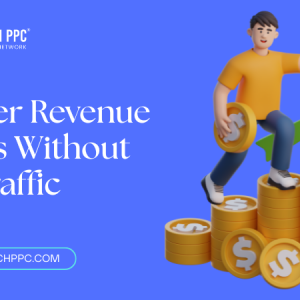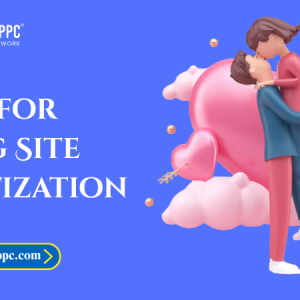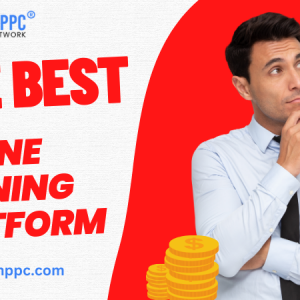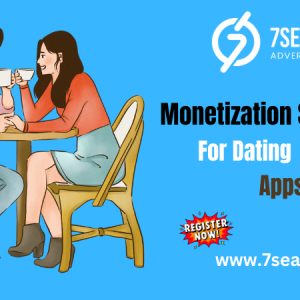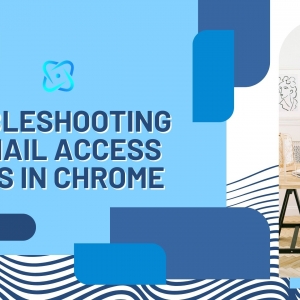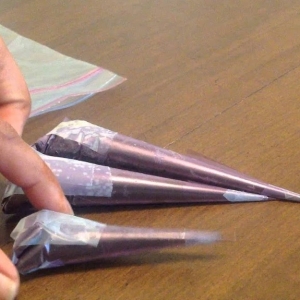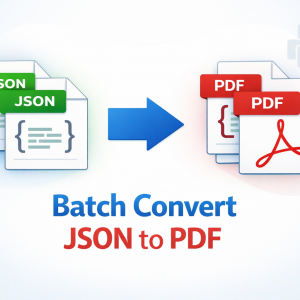In today's digital age, non-governmental organizations (NGOs) and charities face intense competition to attract attention and donations. The success of these organizations often hinges on their ability to reach the right audience with compelling messages. Leveraging advertising platforms, specifically designed for NGOs and charities, can significantly expand their visibility and maximize impact. In this article, we will explore the best platforms for NGO advertising and strategies to boost your charity’s reach, using targeted "ad charity" campaigns.
Why Advertising is Crucial for NGOs
In a world overflowing with content, simply having a good cause is not enough. To stand out, NGOs must make effective use of advertising platforms. Digital advertising enables charities to:

Increase visibility: Reach a broader audience beyond organic reach.
Drive donations: Engage with potential donors more effectively through tailored ads.
Raise awareness: Create impactful messages that bring attention to causes.
When done correctly, charity ads can serve as a powerful tool for growth, helping NGOs achieve their missions.
What is Ad Charity?
Ad charity refers to the use of advertising tools and networks to promote NGOs and charitable causes. This includes platforms like Google Ads, social media advertising, and specialized ad networks tailored to the unique needs of charities. Unlike commercial ads, charity ads focus on driving donations, raising awareness, and inspiring action, often using storytelling and emotional appeal to connect with audiences.
Top Platforms for NGO Advertising
Google Ad Grants
Google Ad Grants is one of the most popular and impactful platforms for NGOs. It provides eligible organizations with up to $10,000 per month in free advertising credit on Google Search. With this grant, NGOs can create search ads that appear when people search for relevant keywords, increasing their online presence.
How to Use Google Ad Grants for Your NGO
Targeted Keywords: Use keywords such as “donation,” “help,” and “support” combined with specific causes like “environment” or “education” to reach potential donors.
Optimized Ad Copy: Ensure your ad copy is compelling, includes a call to action (CTA), and is relevant to the keywords used.
Effective Landing Pages: Direct users to optimized landing pages that provide clear information about your cause and encourage them to take action (e.g., donate, volunteer).
Facebook and Instagram Ads
Facebook and Instagram ads offer NGOs the opportunity to reach a highly targeted audience based on demographics, interests, and behavior. These platforms are ideal for visual storytelling, making them perfect for NGOs looking to create compelling ads for charity.
Benefits of Facebook and Instagram Ads for NGOs
Precise Targeting: NGOs can create ads for specific segments, such as young donors interested in environmental conservation or older individuals inclined to support health-related causes.
Visual Storytelling: Use images and videos to showcase the impact of your work, bringing your story to life.
Engagement Features: Utilize features like “Donate” buttons directly within the ad, making it easier for users to contribute.
YouTube Nonprofit Program
YouTube offers a Nonprofit Program that helps NGOs create video ads to spread their message. Videos are a powerful medium for storytelling, allowing NGOs to show the impact of their work and inspire donations.
Why Use YouTube for Charity Ads?
Wider Reach: YouTube is the second-largest search engine, providing NGOs with a massive audience.
Engaging Format: Videos have higher engagement rates compared to text or image ads, making them an effective medium for communicating complex or emotional stories.
YouTube Donation Cards: Enable donation options directly in the videos, making it easier for viewers to contribute.
LinkedIn Ads for Nonprofits
LinkedIn is a highly professional platform, ideal for NGOs targeting business leaders, philanthropists, and corporate sponsors. LinkedIn's advertising options allow NGOs to run sponsored content, InMail campaigns, and display ads.
How LinkedIn Ads Can Benefit NGOs
Target High-Value Donors: LinkedIn is great for connecting with individuals and corporations who can make significant donations.
Promote Events and Fundraisers: Use LinkedIn ads to promote charity events, conferences, or networking opportunities aimed at attracting donors or partners.
Increase Awareness Among Professionals: Advertise NGO job openings or volunteer opportunities to professionals interested in giving back.
Microsoft Ads (Bing Ads)
Microsoft's advertising platform, previously known as Bing Ads, offers discounted advertising solutions for nonprofits through its Microsoft Ads for Social Impact program. Though often overlooked, Bing has a considerable user base, and advertising here can give NGOs a competitive edge.
Why NGOs Should Consider Microsoft Ads
Less Competition: While Google Ads is more popular, fewer advertisers use Microsoft Ads, meaning NGOs can enjoy less competition for certain keywords.
Microsoft Audience Network: This ad network extends your reach beyond search to platforms like MSN and Outlook, providing more opportunities to connect with potential donors.
Budget-Friendly: Nonprofits can benefit from discounted rates, stretching their advertising budgets further.
Key Strategies to Boost Charity Ads
Understand Your Target Audience
One of the most critical aspects of running successful charity ads is knowing your audience. Understanding who your donors are—whether they’re millennials, baby boomers, or corporate sponsors—will allow you to tailor your ads effectively.
How to Identify Your Audience
Use Data Analytics: Platforms like Facebook, Google Analytics, and LinkedIn offer in-depth audience insights.
Survey Your Donors: Send out surveys to past donors to learn more about their preferences and why they support your cause.
Segment Your Audience: Create specific ad campaigns for different groups, such as first-time donors, recurring donors, or corporate sponsors.
Utilize A/B Testing
Testing different versions of your ads is essential to find out what works best. This process is known as A/B testing, and it helps optimize your ad charity campaigns.
A/B Testing Elements
Ad Copy: Test different headlines, CTAs, and descriptions to see which resonate most with your audience.
Visuals: Experiment with various images, colors, or videos to determine which drives more engagement.
Targeting: Adjust your targeting parameters—such as age, location, and interests—to refine your reach.
Leverage Storytelling in Charity Ads
Storytelling is at the heart of successful charity advertising. By telling stories of real people impacted by your NGO’s work, you create an emotional connection with your audience, encouraging them to support your cause.
Tips for Effective Storytelling
Use Real Testimonials: Showcase the stories of people or communities your NGO has helped.
Highlight Urgency: Create a sense of urgency around the need for donations or support.
Incorporate Visuals: Use images and videos to make your story more compelling and relatable.
The Importance of Ad Networks for NGOs
An ad network is a service that connects advertisers with websites looking to host ads. For NGOs, using an ad network can help amplify their reach by placing charity ads across a range of sites, often at lower costs compared to traditional advertising.
Popular Ad Networks for NGOs
Google Display Network (GDN): Google’s network places banner ads across millions of websites, apps, and videos, giving NGOs immense reach.
Facebook Audience Network: Extends Facebook ad campaigns to apps and websites beyond the Facebook platform.
AdRoll: This platform focuses on retargeting ads, allowing NGOs to re-engage with individuals who have previously visited their website.
Using an ad network can ensure that your charity ads reach the right people at the right time, maximizing your advertising budget's efficiency.
Conclusion
Advertising plays a pivotal role in expanding the reach of NGOs and charities. By leveraging top platforms like Google Ad Grants, Facebook Ads, and YouTube, combined with strategic ad networks, NGOs can effectively engage with donors and drive support for their cause. Utilizing targeted keywords such as ad charity, charity ads, ads for charity, ads NGO, and ad network will ensure that your campaigns are SEO-friendly and optimized for success.
To boost your NGO's reach, focus on understanding your audience, leveraging storytelling, and employing ad networks. These approaches will help you create impactful, high-visibility charity ads that make a real difference in the world.
Frequently Asked Questions (FAQs)
What is NGO advertising, and why is it important?
Answer: NGO advertising refers to the promotional efforts made by non-governmental organizations to raise awareness, attract donations, and engage with potential supporters. It is important because it helps NGOs reach a broader audience, effectively communicate their mission, and ultimately drive more donations and support for their causes.
How can NGOs benefit from Google Ad Grants?
Answer: Google Ad Grants provides eligible NGOs with up to $10,000 per month in free advertising credits on Google Search. This allows NGOs to create search ads that appear when relevant keywords are searched, increasing their visibility, driving traffic to their websites, and encouraging donations without incurring advertising costs.
What types of ads can NGOs create on Facebook and Instagram?
Answer: NGOs can create various types of ads on Facebook and Instagram, including image ads, video ads, carousel ads (which allow showcasing multiple images or videos), and story ads. These formats enable NGOs to tell compelling stories, promote fundraising events, and directly ask for donations through integrated features like “Donate” buttons.
How does YouTube support NGO advertising?
Answer: YouTube supports NGO advertising through its Nonprofit Program, allowing NGOs to create video ads that showcase their work and impact. The platform provides NGOs with special features, such as donation cards in videos, making it easier for viewers to contribute. Video ads on YouTube can significantly enhance engagement and storytelling.


